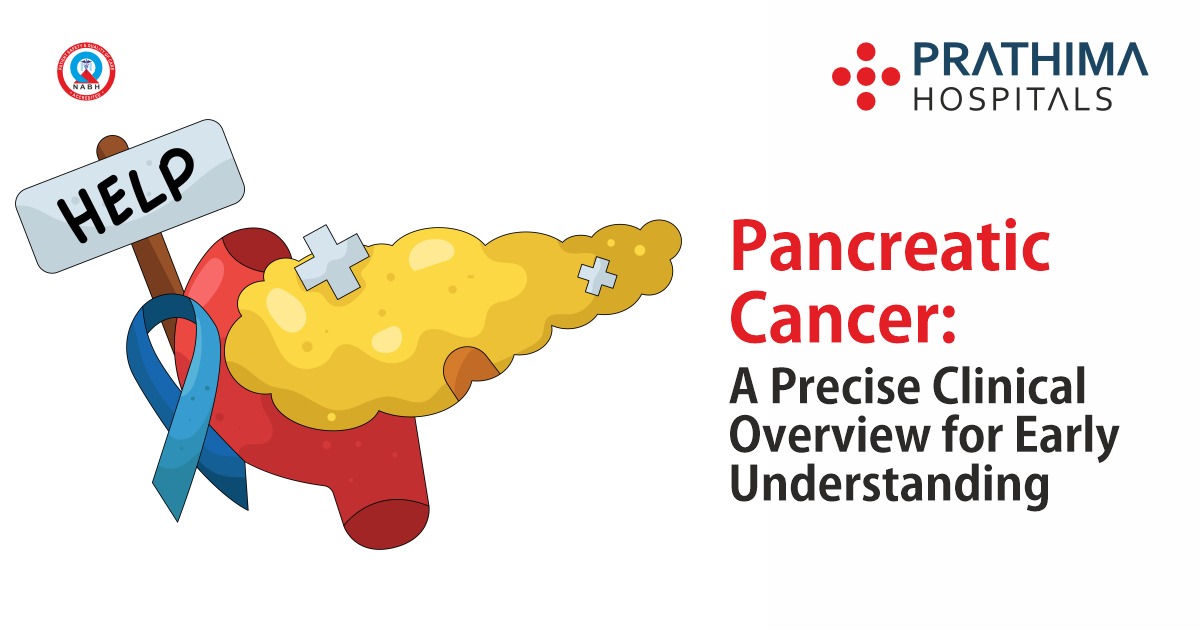Unlocking the World of Arthritis: A Comprehensive Guide for World Arthritis Day 2023!

World Arthritis Day 2023
Introduction:
Every year on October 12th, the world observes World Arthritis Day to increase awareness about arthritis, a condition that affects millions of people globally. According to the Orthopedician in Hyderabad, Arthritis refers to a group of over 100 joint disorders, with typical symptoms being joint pain, stiffness, and swelling. This chronic condition can have a significant impact on a person’s quality of life, making it essential to comprehend its causes, symptoms, diagnosis, and management.
In this article, we will delve into the world of arthritis, shedding light on its various forms, risk factors, treatment options, and the importance of early detection and management. By the end of this article, you will have a better understanding of what arthritis is, how it affects individuals, and what you can do to support those living with this condition.
Understanding Arthritis
Arthritis is a term that refers to joint inflammation, including a variety of conditions, each with its unique characteristics. General varieties of arthritis stand as:
- Osteoarthritis (OA): OA is the most prevalent form of arthritis, affecting millions of people worldwide, especially as they age. It primarily affects the cartilage—the protective tissue that cushions the ends of bones in the joints. As cartilage breaks down over time, bones may rub against each other, causing pain, swelling, and reduced joint flexibility.
- Rheumatoid Arthritis (RA): RA is an autoimmune disorder in which the body’s immune system mistakenly attacks healthy joint tissues. It can affect multiple joints simultaneously, leading to pain, swelling, and joint deformities. RA often starts in smaller joints, such as those in the fingers and wrists.
- Psoriatic Arthritis: It’s a type of arthritis that is associated with psoriasis, a skin condition characterized by red, scaly patches. This type of arthritis can cause joint inflammation, pain, and swelling, and may also lead to nail changes and eye problems. If you are experiencing any of these symptoms, it’s important to seek medical attention to determine the best course of treatment for you.
- Ankylosing Spondylitis: Ankylosing spondylitis primarily affects the spine and sacroiliac joints (located at the base of the spine). It causes inflammation that can lead to pain, and stiffness, and potentially result in the fusion of the spine.
- Juvenile Arthritis: Juvenile arthritis refers to arthritis that develops in children and adolescents. It can take several forms, with juvenile idiopathic arthritis (JIA) being the most common. Fever, swelling, and joint pain are some of the signs.
- Gout: As said by the Orthopaedician in Kachiguda, Gout is characterized by the buildup of uric acid crystals in the joints, typically affecting the big toe. It causes sudden and severe pain, often accompanied by redness and swelling.
- Systemic Lupus Erythematosus (SLE): While primarily known as a systemic autoimmune disease, lupus can also affect the joints. Joint pain, stiffness, and swelling are common symptoms of lupus arthritis.
- Septic Arthritis: This type of arthritis occurs when bacteria or other pathogens infect a joint. It is a medical emergency that requires prompt treatment to prevent joint damage.
- Reactive Arthritis: Reactive arthritis typically develops as a reaction to an infection in another part of the body, such as the urinary tract or intestines. It can cause joint pain, inflammation, and other symptoms.
- Osteoporosis: Although not a form of arthritis, osteoporosis involves the weakening of bones, making them more susceptible to fractures. People with osteoporosis may experience joint pain and stiffness.
Risk Factors for Arthritis – Best Orthopedic Hospital in Hyderabad
Arthritis can affect anyone, but certain risk factors increase the likelihood of developing the condition. These risk factors include:
- Age: The risk of osteoarthritis increases with age, making it more common among older adults. However, arthritis can affect individuals of all ages, including children.
- Gender: Some types of arthritis, such as rheumatoid arthritis, are more prevalent in women, while others, like ankylosing spondylitis, are more common in men.
- Genetics: A family history of arthritis can increase your risk of developing the condition. Certain genetic factors may predispose individuals to autoimmune forms of arthritis.
- Obesity: Excess body weight places additional stress on the joints, particularly in the knees, hips, and spine. It’s the main cause of osteoarthritis.
- Joint Injuries: Previous joint injuries or trauma can lead to the development of osteoarthritis in the affected joints.
- Infections: Infections can trigger reactive arthritis or septic arthritis in some cases.
- Smoking: Smoking is a known risk factor for rheumatoid arthritis and can worsen the disease’s progression.
- Autoimmune Conditions: If you have an autoimmune disease, such as psoriasis or lupus, you may be at a higher risk of developing arthritis.
- Environmental Factors: As per the Orthopedician in Kukatpally, exposure to certain environmental factors, such as asbestos or silica dust, can increase the risk of developing some forms of arthritis.
- Gender: Some types of arthritis, such as rheumatoid arthritis, are more common in women, while others, like ankylosing spondylitis, are more common in men.
- Genetics: A family history of arthritis can increase your risk of developing the condition. Certain genetic factors may predispose individuals to autoimmune forms of arthritis.
- Obesity: Excess body weight places additional stress on the joints, particularly in the knees, hips, and spine. It’s the main cause of osteoarthritis.
- Joint Injuries: Previous joint injuries or trauma can lead to the development of osteoarthritis in the affected joints.
- Infections: Infections can trigger reactive arthritis or septic arthritis in some cases.
- Smoking: Smoking is a known risk factor for rheumatoid arthritis and can worsen the disease’s progression.
- Autoimmune Conditions: If you have an autoimmune disease, such as psoriasis or lupus, you may be at a higher risk of developing arthritis.
- Environmental Factors: Exposure to certain environmental factors, such as asbestos or silica dust, can increase the risk of developing some forms of arthritis.
Signs and Symptoms
The signs and symptoms of arthritis can vary depending on the type of arthritis and its severity. However, common symptoms include:
- Joint Pain: According to the Orthopaedician in Kachiguda, constant discomfort in one (or) more joints is a symbol of arthritis. The pain may be mild or severe and can vary in intensity throughout the day.
- Joint Stiffness: Arthritis often causes stiffness in the affected joints, making it challenging to move them, especially in the morning or after periods of inactivity.
- Swelling: Inflammation in the joints can lead to visible swelling and warmth around the affected area.
- Reduced Range of Motion: Arthritis can limit the range of motion in affected joints, making it difficult to perform daily tasks.
- Fatigue: Chronic pain and inflammation can lead to fatigue, which can affect a person’s overall energy levels and well-being.
- Joint Deformities: In severe cases, certain types of arthritis, such as rheumatoid arthritis, can lead to joint deformities, affecting the appearance and function of the joint.
- Fever: Some forms of arthritis, like juvenile idiopathic arthritis, may be accompanied by fever.
- Skin Changes: Psoriatic arthritis often presents with skin changes, such as red, scaly patches on the skin.
- Nail Changes: Psoriatic arthritis can also cause changes in the nails, including pitting or separation from the nail bed.
It’s important to note that arthritis symptoms can come and go, and their severity can vary from person to person. Earlier diagnosis & restorative are crucial to controlling signs and stopping joint damage.
Diagnosis
Diagnosing arthritis typically involves a combination of medical history assessment, physical examination, imaging tests, and laboratory tests. Here’s how healthcare professionals diagnose arthritis:
- Medical History: The doctor will ask about your symptoms, their duration, and any risk factors or family history of arthritis.
- Physical Examination: The healthcare provider will examine your joints for signs of inflammation, tenderness, and swelling.
- Imaging Tests: X-rays, magnetic resonance imaging (MRI), and ultrasound scans can help visualize the affected joints and detect joint damage or inflammation.
- Blood Tests: Blood tests can help diagnose specific types of arthritis. For example, rheumatoid arthritis is often associated with elevated levels of rheumatoid factor and anti-cyclic citrullinated peptide (anti-CCP) antibodies. Elevated classes of uric acid in blood may suggest gout.
- Joint Fluid Analysis: In some cases, the doctor may extract fluid from an affected joint to analyze it for signs of infection or inflammation.
- Synovial Biopsy: In rare cases, a synovial biopsy may be performed to examine the synovium, the lining of the joint, for signs of inflammation or autoimmune activity.
Early diagnosis is critical for effective arthritis management. Prompt treatment can help alleviate symptoms, prevent joint damage, and improve a person’s overall quality of life.
Treatment Options
The treatment of arthritis aims to manage symptoms, slow the progression of the disease, and improve joint function. The specific treatment approach depends on the type of arthritis, its severity, and the individual’s overall health. Here are common restorative choices for arthritis:
1. Medications:
- Nonsteroidal Anti-Inflammatory Drugs (NSAIDs): NSAIDs, such as ibuprofen and naproxen, can help reduce pain and inflammation.
- Disease-Modifying Antirheumatic Drugs (DMARDs): DMARDs like methotrexate and sulfasalazine are often used to treat autoimmune forms of arthritis like rheumatoid arthritis.
- Biologics: Biologic medications, such as tumour necrosis factor (TNF) inhibitors, target specific molecules involved in the inflammatory process. They are used to treat autoimmune arthritis and can slow the progression of the disease.
- Corticosteroids: These anti-inflammatory medications can be injected into the affected joint or taken orally to reduce inflammation and relieve pain.
2. Physical Therapy: Physical therapists can develop personalized exercise programs to improve joint flexibility, strength, and function.
- Occupational Therapy: Occupational therapists help individuals learn how to perform daily tasks with minimal joint strain.
- Assistive Devices: Devices such as splints, braces, and orthopaedic shoes can support and protect affected joints.
3. Lifestyle Modifications:
- Weight Management: Maintaining a healthy weight can reduce stress on weight-bearing joints and alleviate symptoms of osteoarthritis.
- Exercise: Regular physical activity can help improve joint flexibility and strength. Less-impact activities like swimming & bicycling are often suggested.
- c. Heat and Cold Therapy: Applying heat or cold packs to affected joints can help reduce pain and inflammation.
4. Surgery: In severe cases where joint damage is extensive, surgical options may be considered. Joint replacement surgery, such as TKR Surgery in Hyderabador hip replacement, can significantly improve joint function and reduce pain.
5. Complementary and Alternative Therapies: Some people find relief from arthritis symptoms through complementary therapies like acupuncture, massage, or dietary supplements. It’s important to consult with a healthcare provider before attempting these methods.
6. Pain Management: Chronic pain associated with arthritis may require specialized pain management techniques, including nerve blocks or pain medication prescribed by a pain specialist.
Living with Arthritis
Living with arthritis can be challenging, but with the right management strategies, individuals can lead fulfilling lives. Here are some tips for managing arthritis effectively:
- Educate Yourself: Understanding your type of arthritis, treatment options, and self-care strategies is essential for effective management.
- Follow Your Treatment Plan: Adhering to the treatment plan prescribed by your healthcare provider is crucial for symptom control and joint protection.
- Stay Active: Engaging in regular, low-impact exercise can help maintain joint flexibility and strength. Confer with a physical therapist for advice on suitable exercises.
- Manage Stress: Stress can exacerbate arthritis symptoms. Engage in meditation, yoga, deep breathing exercises, or other stress-reduction methods.
- Maintain a Healthy Diet: A balanced diet rich in fruits, vegetables, and omega-3 fatty acids can help reduce inflammation and support overall joint health.
- Get Adequate Rest: Quality sleep is essential for managing pain and fatigue associated with arthritis. Get proper sleep at least for 7 hours.
- Use Assistive Devices: Consider using assistive devices like canes, splints, or jar openers to ease daily tasks and reduce joint strain.
- Seek Support: Joining a support group or connecting with others who have arthritis can provide emotional support and valuable tips for coping with the condition.
- Adapt Your Environment: Make modifications to your living space to reduce the risk of falls and make daily activities easier to perform.
- Communicate with Your Healthcare Team: Keep your healthcare provider informed about any changes in your symptoms or treatment response. Routine check-ups are necessary for watching your state.
World Arthritis Day and Advocacy
World Arthritis Day is an opportunity to raise awareness about arthritis and advocate for better care, research, and support for individuals living with the condition. There are several ways for you to engage:
- Share Information: Spread awareness about arthritis on social media platforms, using hashtags like #WorldArthritisDay and #ArthritisAwareness.
- Organize or Attend Events: Participate in local events, seminars, or support groups focused on arthritis awareness and education.
- Advocate for Research: Support organizations and initiatives that fund research into arthritis prevention, treatment, and cure.
- Share Personal Stories: Sharing personal experiences with arthritis can help reduce stigma and inspire others who are living with the condition.
Conclusion:
Arthritis is a prevalent and diverse group of conditions that affect millions of people worldwide. While there is no cure for arthritis, early diagnosis and appropriate management strategies with the Orthopedician in Kachiguda, can significantly improve the quality of life for individuals living with the condition. On World Arthritis Day, it’s essential to raise awareness about arthritis, reduce stigma, and advocate for improved care and support for those impacted by this chronic condition. By promoting education and research, we can work towards a future where arthritis is better understood, effectively managed and ultimately prevented.
.
.
.
.
.
For More Details:
📞:: 733 733 6600 | 040 4345 4345
🌐:: https://prathimahospitals.com/book-appointment/






Warning: Undefined variable $req in /home/u885608126/domains/prathimahospitals.com/public_html/wp-content/themes/prathimahospitals/functions.php on line 294
Warning: Undefined variable $commenter in /home/u885608126/domains/prathimahospitals.com/public_html/wp-content/themes/prathimahospitals/functions.php on line 295
Warning: Trying to access array offset on value of type null in /home/u885608126/domains/prathimahospitals.com/public_html/wp-content/themes/prathimahospitals/functions.php on line 295
Warning: Undefined variable $aria_req in /home/u885608126/domains/prathimahospitals.com/public_html/wp-content/themes/prathimahospitals/functions.php on line 295
Warning: Undefined variable $req in /home/u885608126/domains/prathimahospitals.com/public_html/wp-content/themes/prathimahospitals/functions.php on line 298
Warning: Undefined variable $commenter in /home/u885608126/domains/prathimahospitals.com/public_html/wp-content/themes/prathimahospitals/functions.php on line 299
Warning: Trying to access array offset on value of type null in /home/u885608126/domains/prathimahospitals.com/public_html/wp-content/themes/prathimahospitals/functions.php on line 299
Warning: Undefined variable $aria_req in /home/u885608126/domains/prathimahospitals.com/public_html/wp-content/themes/prathimahospitals/functions.php on line 300
Warning: Undefined variable $commenter in /home/u885608126/domains/prathimahospitals.com/public_html/wp-content/themes/prathimahospitals/functions.php on line 303
Warning: Trying to access array offset on value of type null in /home/u885608126/domains/prathimahospitals.com/public_html/wp-content/themes/prathimahospitals/functions.php on line 303